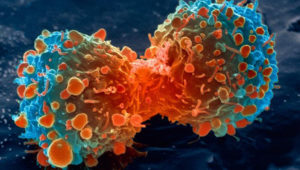This is Part 2 on how lifestyle influences aging. Many recent research reports tell of a link between our lifestyle and how we'll age - whether we'll be active and healthy well into our 80s or in terrible shape and dying young. Mind you, these are not "definites" because nothing can give you a guarantee, but they are ways we can improve our odds in living the long and healthy life that we want. From February 2014 Medscape:
Cancers Caused by Lifestyle Behaviors: Experts Urge Action
In launching the World Cancer Report 2014 earlier this week, the editors emphasized the need for prevention and highlighted lifestyle behaviors that lead to cancer, including smoking tobacco, drinking alcohol, overweight/obesity, and lack of exercise. The report, issued by the International Agency for Research on Cancer (IACR), contains contributions from more than 250 scientists worldwide, many of them leading experts in their fields.
In the United States, 1 in 3 cancer deaths is related to obesity, poor nutrition, or physical inactivity, and the problem will only increase as more countries and regions adopt the diet and lifestyles of more economically developed economies."
Tobacco, both smoked and smokeless, remains the world's leading cause of cancer morbidity and mortality, the report notes. The IACR and also the US Surgeon General have concluded that the relationship with smoking is causal for cancers of the nasal and oral cavities, hypopharynx, larynx, trachea, esophagus, lung, bronchus, bone marrow (leukemia), stomach, kidney, pancreas, ureter, uterus, bladder, and cervix. The IACR expands this list to also include paranasal sinuses, liver, colon, rectum, and ovary (mucinous), but says it is unclear if there is a link with breast cancer.
Still under-recognized, and not acted on, is the association between drinking alcohol and cancer. The agency says cancers caused by drinking alcoholic beverages include those of the oral cavity, pharynx, larynx, esophagus, liver, colorectum, and female breast.
Excess body fat increases the risk for cancers of the esophagus, colon, pancreas, endometrium, and kidney, as well as postmenopausal breast cancer. The evidence for obesity increasing the risk for these cancers is "convincing," the agency comments, and there is a dose–response relationship, so being overweight is less risky than being obese.
Regular physical activity reduces the risk for multiple cancers by contributing to weight control, and also reduces the risk for colorectal and breast cancer by additional mechanisms. The general consensus among researchers is that exercise should be of moderate intensity and average at least an hour each day.
High consumption of red meat, especially processed meat, is associated with a risk for colorectal cancer. "A diet high in fruit and vegetables and whole grains does not appear to be as strongly protective against cancer as initially believed," the report notes. "However, this dietary pattern is still advisable because of the benefits for diabetes and cardiovascular diseases, and some possible reductions in cancer incidence."
From Science Daily:
Watching too much TV may increase risk of early death: Three hours a day linked to premature death from any cause
Adults who watch TV three hours or more a day may double their risk of premature death from any cause. Researchers suggest adults should consider getting regular exercise, avoiding long sedentary periods and reducing TV viewing to one to two hours a day.
Results of a large study published in the Mayo Clinic Proceedings. From Science Daily:
Large waist linked to poor health, even among those in healthy body mass index ranges
Having a big belly has consequences beyond trouble squeezing into your pants. It’s detrimental to your health, even if you have a healthy body mass index (BMI), a new international collaborative study has found. Men and women with large waist circumferences were more likely to die younger, and were more likely to die from illnesses such as heart disease, respiratory problems, and cancer after accounting for body mass index, smoking, alcohol use and physical activity.
Some good news for those who have to sit for long periods every day at work - being physically fit may help. From Science Daily:
Physical fitness associated with less pronounced effect of sedentary behavior
Physical fitness may buffer some of the adverse health effects of too much sitting, according to a new study. Sedentary behavior has been linked to an increase risk of obesity, metabolic syndrome, type 2 diabetes mellitus, cardiovascular disease, some cancers, and premature death. But previous studies of the association have not taken into account the protective impact of fitness, a strong predictor of cardiovascular disease incidence and mortality.
 We all know cigarette smoking is bad for our health (for example, higher rates of heart disease, respiratory disease, and cancer), but it also has an effect on our brains. Yup. Research shows it's associated with a decrease in brain size (volume)!
We all know cigarette smoking is bad for our health (for example, higher rates of heart disease, respiratory disease, and cancer), but it also has an effect on our brains. Yup. Research shows it's associated with a decrease in brain size (volume)!
 For those who need convincing that lifestyle can contribute to development of cancer or its prevention, new medical research has once again supported the importance of lifestyle choices.
For those who need convincing that lifestyle can contribute to development of cancer or its prevention, new medical research has once again supported the importance of lifestyle choices.  Another
Another  Most people know that heavy drinking of alcohol, smoking marijuana, cigarette smoking, and using methamphetamine during pregnancy should be avoided because they can have negative effects on the developing fetus. However,
Most people know that heavy drinking of alcohol, smoking marijuana, cigarette smoking, and using methamphetamine during pregnancy should be avoided because they can have negative effects on the developing fetus. However,